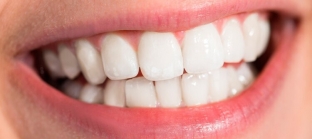Tooth enamel is an important functional component, without which the condition and appearance of the tooth deteriorates significantly. In dentistry, there is a pathological condition that is accompanied by a violation of the enamel and insufficient coverage of the tooth. This is called enamel hypoplasia. Recently, this pathology is diagnosed more and more often. What is it connected with and what to do with tooth enamel hypoplasia? About the clinical manifestations of tooth enamel hypoplasia, as well as treatment and correction, the effect of enamel hypoplasia on the condition of the teeth, read on estet-portal.com.
What are the causes of tooth enamel hypoplasia
Enamel hypoplasia is a congenital malformation of tooth underdevelopment. There is an opinion that hypoplasia – these are areas of demineralization that have arisen as a result of a violation of the metabolism of minerals. This statement is not entirely true, since for such reasons, pathology would not be so common. The reasons for this is a metabolic disorder in the fetus during its formation. Also, the pathology of the laying of the cells of the embryo leads to this.
Changes in growth and metabolism in the fetus are provoked by negative factors. Factors that provoke the development of hypoplasia include infectious diseases that a pregnant woman has suffered.
So, in children whose mothers had ARVI, rubella or toxoplasmosis during pregnancy, enamel hypoplasia is more common.
How does the localization of enamel hypoplasia depend on the time of exposure to factors
Enamel hypoplasia is detected in almost half of children of primary and preschool age. It can be on both milk and permanent teeth. The pathology of milk teeth develops with pathologies of pregnancy, hypoplasia of permanent teeth develops with a metabolic disorder in the child's body after six months. If children get sick more often in the first year of life, then hypoplasia is more common on permanent teeth.
The localization of hypoplasia in the dentition directly depends on the age at which the child was exposed to harmful factors. Under the influence of these factors in the first months of life, hypoplasia develops on the enamel of the cutting edge of the central incisors and tubercles of the sixth teeth. At the end of the first year of life, namely at 8-9 months, the second incisors and canines are formed. Pathologies at this age lead to enamel hypoplasia of the lateral incisors and the cutting edge of the canine. Metabolic disorders are manifested in all formed teeth. After teething, areas of hypoplasia are at different levels due to different periods of tooth formation.

Clinical manifestations of tooth enamel hypoplasia
Manifestations of systemic hypoplasia differ from local hypoplasia. Systemic enamel hypoplasia is manifested by a change in its color, absence or underdevelopment. Symmetrical white spots are located on the teeth of the same name. Chalk spots are found on the vestibular surface of the teeth. These spots are not accompanied by any symptoms.
The outer layer of tooth enamel in the affected areas does not change its color under the action of dyes, has a smooth and shiny surface, this is a specific sign of tooth enamel hypoplasia.
The shape and size of the spot with enamel hypoplasia does not change throughout life.
Even with the most severe forms of hypoplasia, the integrity of the enamel is not broken. Local hypoplasia is detected on permanent teeth and is manifested by yellow-brown or white spots on the tooth. Sometimes the enamel of the crown of the tooth is completely or partially missing.
The effect of enamel hypoplasia on the condition of the teeth:
- Tooth enamel hypoplasia provokes a more aggressive effect of microbes on dentin, which contributes to the development of deep caries.
- Pulp and dentin may be affected.
- Against the background of this disease, many children develop malocclusion.
Treatment and correction of teeth in case of enamel hypoplasia
In case of shallow single lesions, caries prevention is carried out, etiotropic treatment is not carried out. If the areas of enamel hypoplasia are a cosmetic defect, filling is carried out with a composite material. Severe enamel defects due to hypoplasia are eliminated with the help of orthopedic treatment with the installation of metal-ceramic crowns.
In order to prevent enamel hypoplasia, it is important for women to prepare for pregnancy, eliminating all foci of infections and increasing immunity. Try in every possible way to prevent the development of infectious diseases during pregnancy.






Add a comment